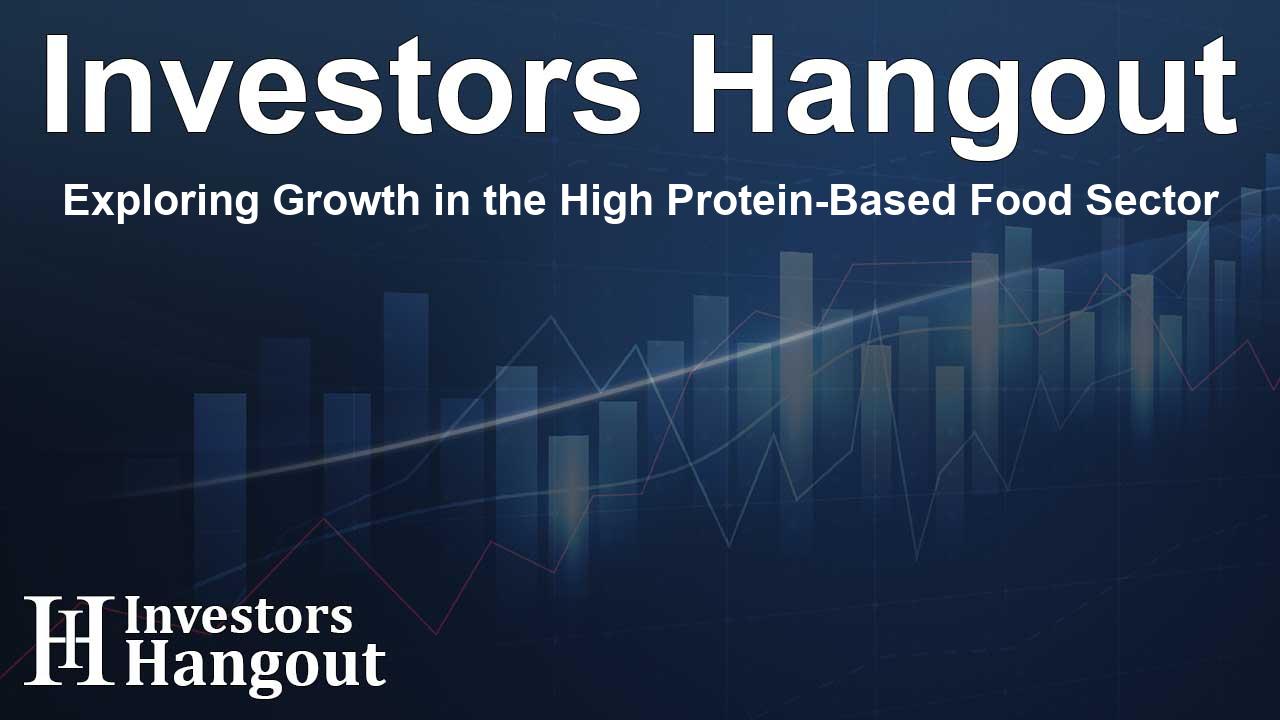Exploring Growth in the High Protein-Based Food Sector

The High Protein-Based Food Market: An Expanding Frontier
The high protein-based food market is on the verge of a significant expansion, estimated to grow by USD 50.2 billion from 2024 to 2028. This growth, representing a compound annual growth rate (CAGR) of approximately 8.65%, is largely fueled by the changing consumer preference towards natural and herbal products. As more individuals lean toward health-conscious choices, the appeal of high-protein foods continues to rise.
Driving Forces Behind Market Growth
The Shift to Healthier Options
A substantial trend influencing this market is the increasing shift towards health-oriented diets. Consumers are prioritizing products that bolster their nutritional intake, with a special emphasis on protein. This focus aligns perfectly with the rise of fitness culture and the ethical considerations surrounding food choices. Many consumers desire not just any protein, but plant-based alternatives, leading to a surge in popularity for protein sources like pea, soy, and lentil.
Celebrity Endorsements and Social Media Influence
Adding to the appeal of high protein-based foods is the impact of social media and celebrity endorsements. Notable athletes and personalities are promoting high-protein diets, which resonate with fans and followers alike. Brands leverage this influencer power to increase awareness and interest, transforming fitness into a lifestyle product that many aspire to adopt.
Challenges in the High Protein Market
Regulatory Constraints
Despite the booming demand, companies in the high protein-based food sector face challenges. Stringent regulatory requirements affect product development and marketing strategies. Compliance with various food safety guidelines can slow down the introduction of new products in diverse markets. Companies must evaluate their formulations and labeling carefully to meet the standards set forth by regulatory bodies in different regions.
Consumer Expectations on Taste and Nutrition
Additionally, consumer taste preferences significantly influence the market. While there is a strong demand for high-protein options, the challenge lies in ensuring these products taste good and provide adequate nutritional value. The balance between nutrition and flavor is crucial, with consumers often veering away from products that compromise on either aspect.
Segment Overview: Understanding Market Dynamics
Product Categories
The segmentation within the high protein-based food market is diverse. Categories include protein-rich drinks, energy sports drinks, and various protein supplements. These products cater to athletes, fitness enthusiasts, and individuals looking to improve their overall wellness. Each segment highlights the versatility of protein usage across different food categories.
Distribution Channels: Online Versus Offline
Distribution channels are also vital to market success. While offline channels like retailers offer immediate access to consumers, the online marketplace is rapidly gaining ground. E-commerce platforms provide convenience and a wider selection, catering to a digitally savvy audience who prefer shopping from home.
Geographic Trends in the High Protein Market
The high protein-based food market sees varied growth across different regions. North America is the largest market, driven by a high prevalence of fitness culture and health-conscious consumers. Europe follows closely, with an increasing focus on dietary innovations that prioritize protein. Emerging markets in APAC and South America showcase rapid growth potential as awareness of the benefits of a protein-rich diet spreads.
Innovations and Future Prospects
Innovation plays a critical role in transforming the market landscape. With the advent of food technologies, companies are developing new products that not only meet health needs but also enhance consumer experience through flavor and texture. The evolution from traditional animal-based proteins to plant-based alternatives reflects a broader shift towards sustainable eating practices.
Frequently Asked Questions
What factors are driving the growth of the high protein-based food market?
The market is driven by changing consumer preferences for healthier and natural products, as well as the increasing popularity of fitness and wellness lifestyles.
How do celebrity endorsements impact this market?
Celebrity endorsements significantly boost brand visibility and consumer interest, making high protein products more appealing to various demographics.
What challenges are present in the high protein market?
Challenges include stringent regulatory requirements and the need to balance taste preferences with nutritional benefits to meet consumer expectations.
How does segmentation affect the high protein food market?
Segmentation allows for targeted marketing and product development, addressing specific consumer needs across different product categories like drinks and supplements.
What is the future outlook for the high protein-based food market?
The future appears bright, with continued innovation and growing demand expected to drive market expansion. Sustainability and ethical sourcing will also play significant roles.
About The Author
Contact Caleb Price privately here. Or send an email with ATTN: Caleb Price as the subject to contact@investorshangout.com.
About Investors Hangout
Investors Hangout is a leading online stock forum for financial discussion and learning, offering a wide range of free tools and resources. It draws in traders of all levels, who exchange market knowledge, investigate trading tactics, and keep an eye on industry developments in real time. Featuring financial articles, stock message boards, quotes, charts, company profiles, and live news updates. Through cooperative learning and a wealth of informational resources, it helps users from novices creating their first portfolios to experts honing their techniques. Join Investors Hangout today: https://investorshangout.com/
The content of this article is based on factual, publicly available information and does not represent legal, financial, or investment advice. Investors Hangout does not offer financial advice, and the author is not a licensed financial advisor. Consult a qualified advisor before making any financial or investment decisions based on this article. This article should not be considered advice to purchase, sell, or hold any securities or other investments. If any of the material provided here is inaccurate, please contact us for corrections.
